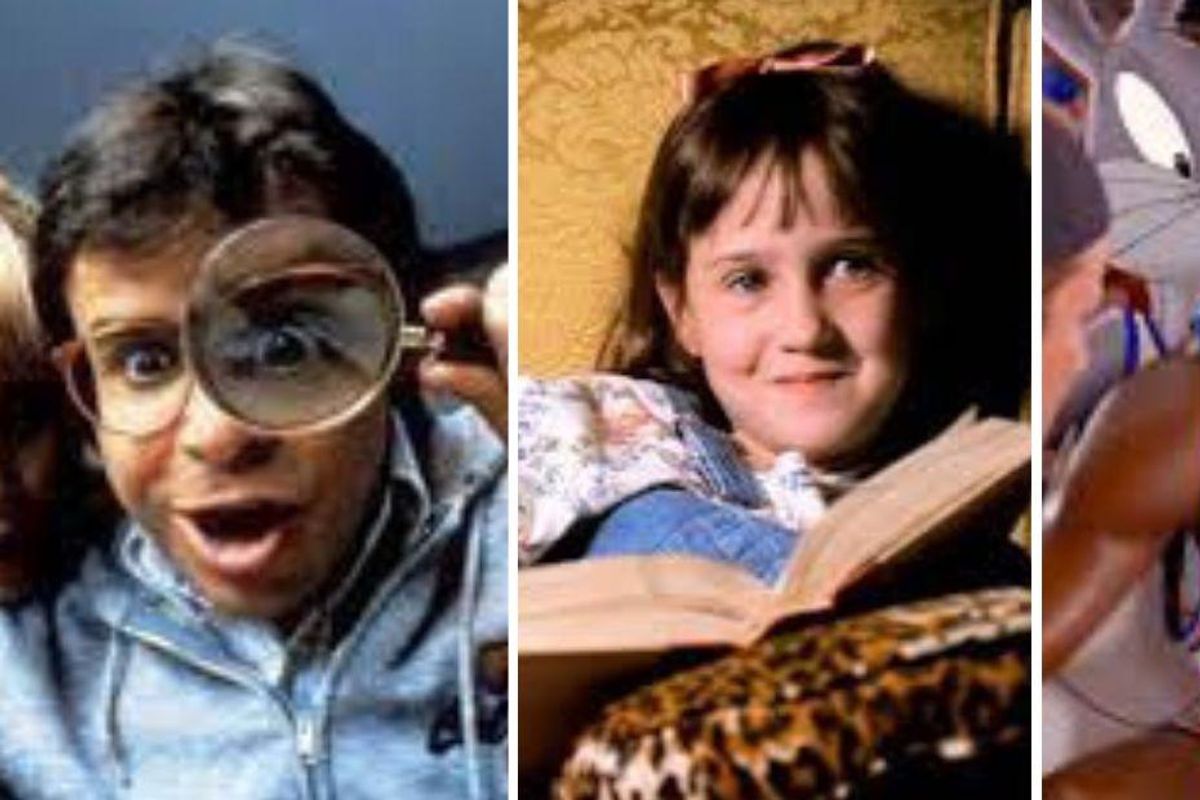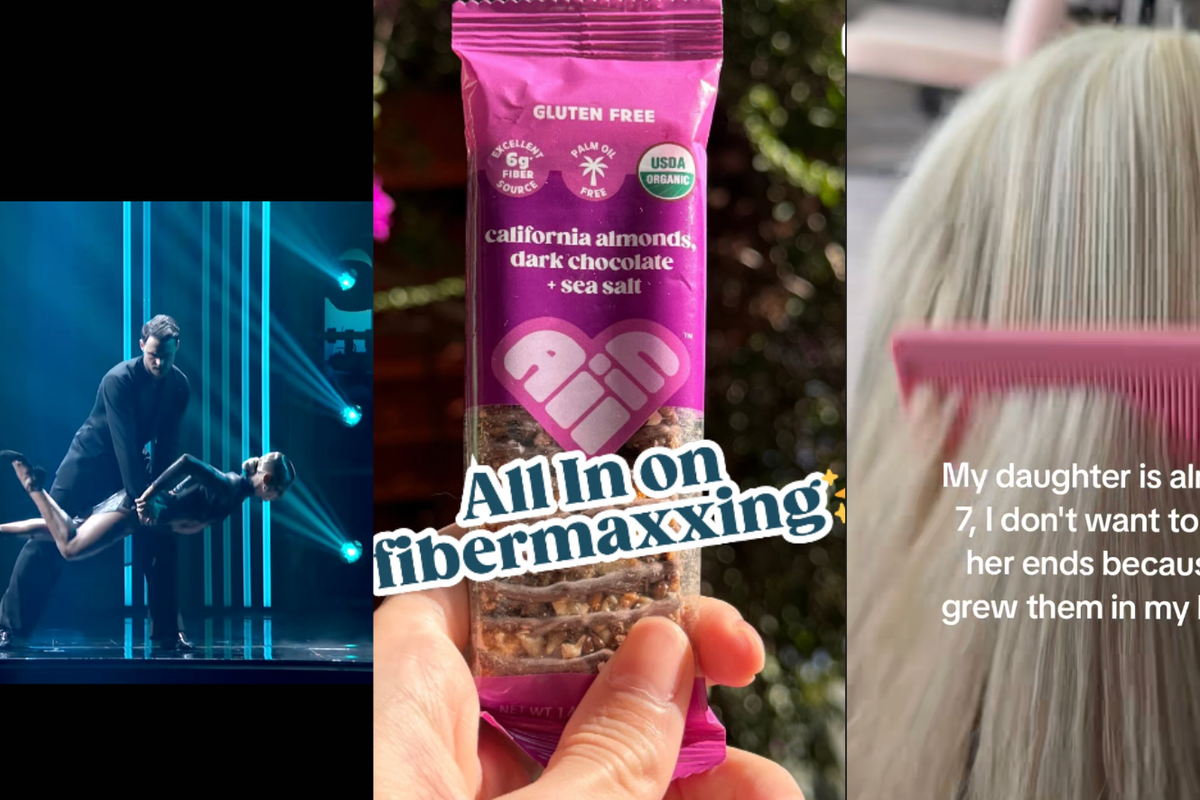'90s kids share movies that will 'take you back to a better time'
It was a magical time when animals played sports and yet somehow things were just simpler.

Honey, I shrunk the kid named Matilda while jamming in space!
Everyone knows that '90s movies just hit different. From sports movies to rom-coms to even horror, there was an undeniable innocence, without being overly simplistic or juvenile. They didn’t have nearly the amount of money going into production as they do today, but somehow managed to transport us to magical places.
Movies of the '90s are so iconic that there have been several attempts to reboot beloved titles. Which, let’s face it, tends to be a fool's errand at a cash grab. These movies are so timeless that simply viewing the original is more than fine. Not sure which movie to start with? You’re in luck—a Reddit user by the name of YouBrokeMyTV asked ’90s kids to share movies that took them “back to a better time,” and because the internet can be a wonderful place, tons of people responded with some beloved classics.
These answers certainly don’t make a definitive list (there are just so, so many gems) but they're a fun glimpse into what made '90s cinema so special. A nostalgic romp through memory lane, if you will.
Enjoy these 14 titles that just might leave you jonesing for a rewatch:
1. "Honey, I Shrunk the Kids"
A perfect example of how '90s movies were silly, but smart at the same time. And oh so wholesome.
2. "The Sandlot"
It taught us nothing about baseball, but everything about friendship, rooting for the underdog and (most important) how to make s’mores.
3. "Drop Dead Fred"
Critics might have run this cult classic through the mud during its inception, but audiences fell in love with the bizarre charm of this story about a mischievous little girl and her anarchist imaginary friend. So take that, snotfaces!
4. "The Goonies"
Everyone just wanted to set off an epic quest with their friends for pirate treasure after seeing this movie.
5. Tim Burton's "Batman"
Before the superhero genre was the behemoth it is today, a quirky director and the dude who was best known for playing the creepy demon in "Beetlejuice" breathed new life into comic-book movies. Marvel might be the leader on creating stories with adult themes that are digestible for kids nowadays, but this DC film was the first of its kind. Plus, that soundtrack … forget about it.
6. "Hook"
Pretty much any '90s film starring Robin Williams was an absolute gem, but this one in particular is timeless. His gift of balancing childlike humor with emotional gravitas lent itself so well to playing the now grown and cynical Peter Pan, who must learn to reclaim his joy (relatable, millennials?). It was a bang-a-rang-er, no question.
7. "Space Jam"
It had Looney Tunes, it had aliens and it had Michael Jordan. That’s a winning combination.
8. "Matilda"
I don’t think I’m out of line when I say that this movie helped a lot of kids make their way through difficult childhoods.
9. "The Parent Trap"
Even '90s reboots were awesome. And how fun it is to see that Lisa Ann Walker—the actress who played Chessy the housekeeper—is not only yet again gracing the screens in NBC’s “Abbott Elementary,” but is also being revered as a style icon on TikTok for her ultra casual looks in the film. We all knew she was onto something with long button downs and shorts.
10. "The Land Before Time"
No cartoon, not even “The Lion King,” was a better depiction of childhood grief. And yet, despite encapsulating tragedy, director Don Bluth still left viewers hopeful. The subsequent 14 (yes 14) sequels definitely pale in comparison to the original, but "The Land Before Time" continues to stand the test of time nonetheless.
11. "Richie Rich"
The scene where they play tag on four-wheelers is simply iconic.
12. "Dunston Checks In"
Man, the '90s were the golden age of animal-centered films. And not just monkeys either—we got sports playing golden retrievers and not one, but two movies starring talking pigs. What a time to be alive. These films were made before CGI had reached the levels it’s at today, and the authentic interactions between humans and creatures reached right through the screen.
13. "George of the Jungle"

Watch out for the tree!!!
GiphyHave I seen this movie at least 20 times? Probably. It doesn’t get any better than this in terms of silly action films with bird puppets. It’s crazy to think that this role would eventually lead Brendan Fraser to "The Mummy" franchise, turning him into a household name. Though his career has had some tragic ups and downs, we are all grateful for the glorious comeback he’s been having.
14. Anything involving Mary-Kate and Ashley Olsen

Yes, they were professional detectives.
GiphyWhether vacationing in London, Paris or Rome, whether playing magical witches or making a huge billboard so their father could find love … Mary-Kate and Ashley Olsen offered zany, whimsical entertainment while wearing fun outfits. Sometimes, that’s all you need.
This article originally appeared two years ago.
- People in the '90s and early 2000s trying to explain the internet is ... ›
- Gen X eplains the '90s swing craze - Upworthy ›
- People share how school was different in the '80s and '90s - Upworthy ›
- Comedian's song about life in the 90s is total nostalgia - Upworthy ›
- Odd 'Cookie' Beanie Baby sells out after going viral - Upworthy ›




 Beaver on riverbank.
Beaver on riverbank.  Pbs Nature Swimming GIF by Nature on PBS
Pbs Nature Swimming GIF by Nature on PBS  An actual beaver dam on the now-thriving Price River
An actual beaver dam on the now-thriving Price River 

 a piece of paper with a heart drawn on it Photo by
a piece of paper with a heart drawn on it Photo by 
 A woman looking annoyed.via
A woman looking annoyed.via  An annoyed woman hugging another woman.via
An annoyed woman hugging another woman.via 
 An old America Online disc. via\u00a0Karl Baron/Flickr
An old America Online disc. via\u00a0Karl Baron/Flickr  Brittany Murphy in the 90s.
Brittany Murphy in the 90s.